Invertebrates
Aside from the butterflies, moths and dragonflies, several other groups of invertebrates have been well studied on Dawlish Warren over the years, some records go back to the 1850s. This page only gives an example of the species recorded, more detailed lists are available but Teignbridge Council data is unfortunately not shared with the Recording Group so these may not be complete. We hope to be able to publish complete lists in the future, if you have any records please send them the relevant scheme, Devon Biodiversity Records Centre and the Recording Group. For more information on National Recording Schemes, please see the Biological Records Centre.
Related Links:
Buglife
Orthoptera (Grasshoppers,
crickets and allies) Related Link:
Grasshopper
Recording Scheme
21 of the 26 native UK species have been recorded on Dawlish Warren, this makes it one of the most
outstanding sites in the UK, especially considering its area. The wide range of
habitats and the mild climate all combine to create the conditions for this wide variety of species.
A summary of species recorded on site can be found here.
Hymenoptera (Bees, wasps and
ants) Related Link:
Bees, Wasps and Ants Recording Society
A total of 286 species have been recorded at the Warren although due to restrictions on collecting by the Recording Group (including trap and release) recent records are confined to those that can be identified from digital images. Many rare species have been recorded over the years, burrowing into the soft sandy substrate to breed, including pre-1970 records of the UK priority species Lasioglossum pauperatum. The large sand wasp Ammophila sabulosa, is one of the few invertebrates mentioned in the SSSI citation and can be regularly seen hunting the Dune Ridge. Recent climate enhanced arrivals include Bee-wolf Philanthus triangulum and Tree Bumblebee Bombus hypnorum, the latter one of nine species of Bumblebee, including Heath Bumblebee Bombus jonellus.
The breakdown of species is: Wasps 177, Bees 62, Sawflies 45 & Ants 2.
A summary of bee species recorded can be found here.
A summary
of wasp species recorded can be found
here.
Diptera (Flies) Related link: Hoverfly Recording Scheme Dipterist's Forum
Many rare species have been recorded over the years, including the UK priority cranefly Geranomyia bezzi, possibly at it's last extant UK site. A total of 684 species have occurred at Dawlish Warren, one of the reasons the national Dipterist's Forum once visited on their annual excursion, unfortunately they were refused permission to undertake any recording!
A dedicated page on the hoverflies recorded on the Warren can be found here.
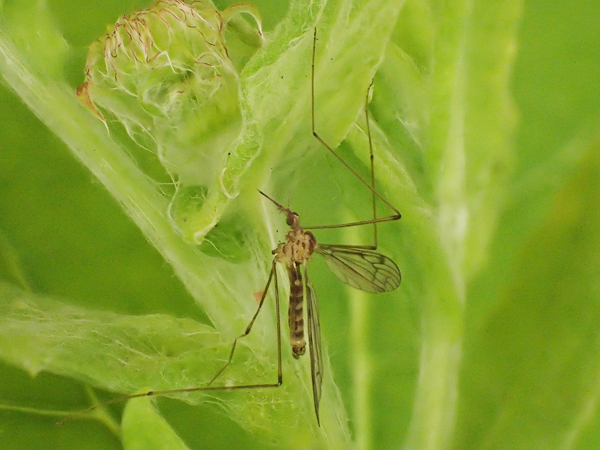
Geranomyia bezzii ©
Rob Wolton
In addition 16 of the UK's 34 mosquito species have been recorded by Dr A.A. Allen on site, six of these new to Devon, only two of which are nuisance biters.
Coleoptera (Beetles)
A total of 313 species have been recorded at the Warren but with the exception of the readily identifiable and often colourful Coccinellidae (Ladybirds),the only recent work includes a list of Carabidae (ground beetles) provided by John Walters and a 2017 study by E Armstrong.
A summary of the ladybirds recorded on site which can be found here,
Other records largely from ad hoc or historical recording, include the only UK records of the weevil Charagmus gressorius. This species feeds on the invasive Tree Lupin but its favoured area was pulled, so a potential ally in lupin control was lost. Two nationally scarce species; Sawyer Beetle Prionus coriarius and the water beetle Dytiscus circumflexus, the latter a first for Devon, taken at moth traps. Included in the list of ground beetles list is the UK priority species Cillenus lateralis (previously Bembidon laterale) which is found around the Bight. There are also old records for another priority species Amara incida, and a third species, which is found in saline mud and has been recorded from the Exe Estuary, may be present within the Recording Area, Bembidon quadripustulatum.
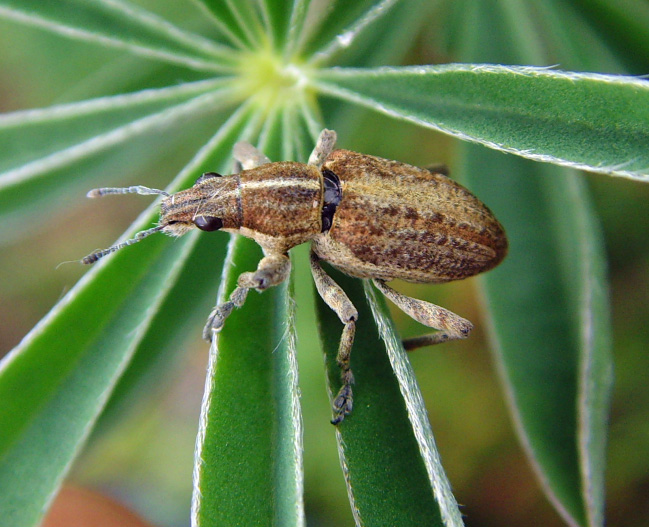
Charagmus gressorius
© Andrew Cunningham
Arachnidae (Spiders)
Related Link:
British Arachnological Society
A full list of species recorded on the Warren can be found here. The most obvious of these the large and colourful Wasp Spider Argiope bruennichi was increasingly recorded in Greenland Lake after being discovered in 2000. However numbers are much declined with over-wintering egg cases often lost to mowing and just one was recorded in 2019 with none in 2020 but a welcome return with two females in 2021.
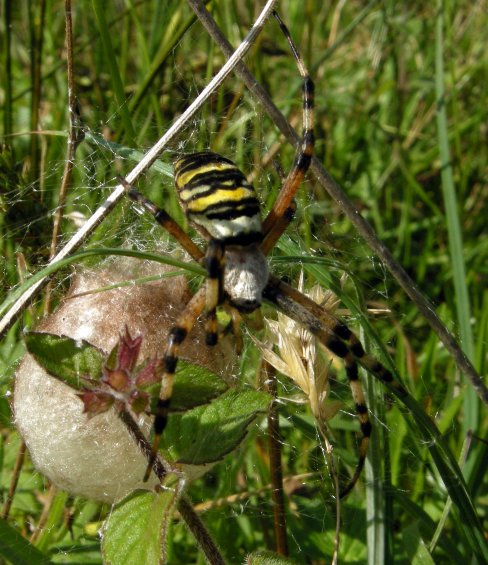
Wasp Spider & egg case ©
John
Fortey
The most notable species is the jumping spider Euophrys herbigrada, last recorded in 1995, there are only six other sites for his species in the UK. Others include the Nationally Scarce species Dune Jumper Marpissa nivoyi, Bleeding Heart spider Nigma puella and the wolf spider Alopecosa cuneata.
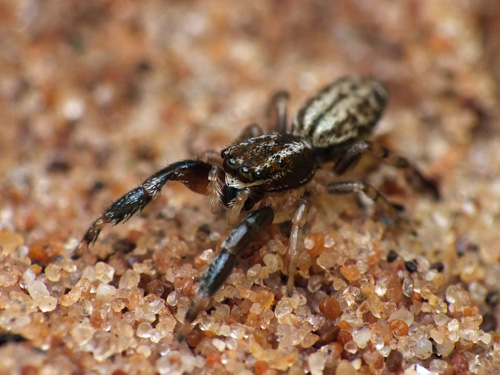
Dune Jumper ©
Andrew Cunningham
Hemiptera (bugs) Related Link: British Bugs
A total of 208 species have been recorded on the Warren, including Italian Alder Aphid Crypturaphis grassii, 12 shieldbugs and other obvious species such as Western Conifer Seed Bug Leptoglossus occidentalis and the Spurge Bug Dicranocephalus agilis.
The introduced Tree Lupin Lupinus arboreus
supports and an American aphid species Macrosiphum albifrons. This
was introduced to the site in an attempt to control the invasive host plant. In
some years this large species can kill off large numbers of Tree Lupin, but it has
not been recorded feeding on any other species on site.
%202019.jpg)
Spurge Bug © Alan Keatley
Molluscs
Just 33 terrestrial/freshwater species have been recorded on site. This includes two shelled slugs Testacella maugei & scutullum, Leopard Slug Limax maximus, Garlic Snail Oxychilus alliaris and Eccentric Glass Snail Vallonia excentrica. Introduced species include Paralaoma servilis, only a few mm long, originally from New Zealand and Mediterranean Snail Theba pisana often found in large numbers high on vegetation.
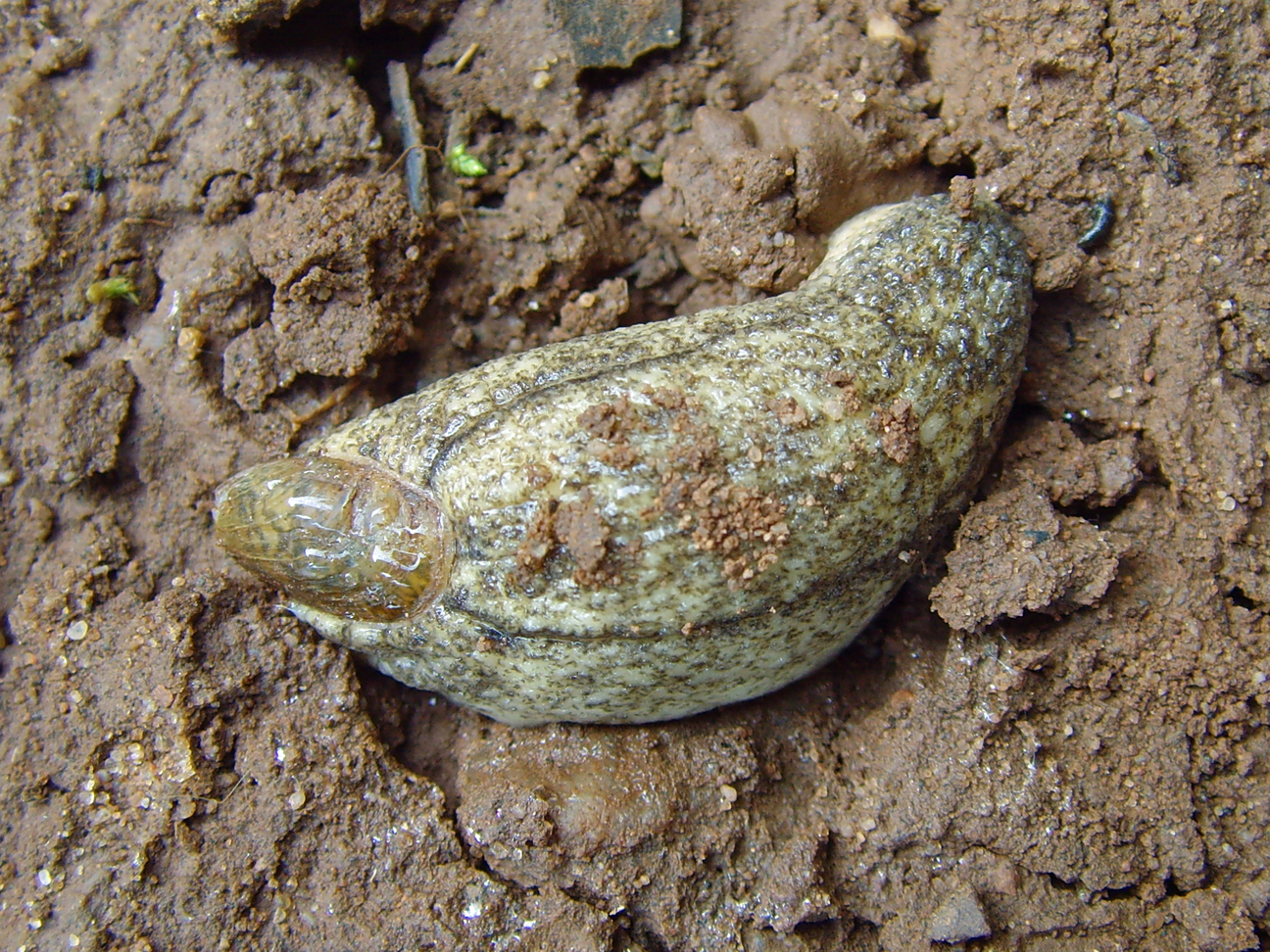
Testacella maugei
©
Andrew Cunningham
A total of 90 marine species have been recorded in surveys and along the tideline, these include Blue-rayed Limpet Tectura virginea, Common Pelican's Foot Aporrhais pespelecani and Spotted Cowrie Trivia monacha. The shells of the tiny snail Peringia (Hydrobia) ulvae can sometimes be found around the shore of the Bight in thousands. It is a major food source for many birds in the estuary and has been recorded at densities of 13,000/sq.m.
%20151114..jpg)
Common Otter Shell
©
Andrew Cunningham
Other species
A huge variety of other species of invertebrates can be
found within the recording area, in all habitats from woodland to mudflats. As
time progresses it is hoped that continued research will be hopefully augmented
by other records and a more complete database will be available. If you are able
to provide further information on any group or species from Common
Water-boatman
Notonecta glauca to the Paignton Cockle
Acanthocardia aculetata please
get in touch.
Other notable species recorded include:
The nationally rare Beach-pill Woodlouse Armadillidium album, is occasionally recorded from debris on the tide line, although recent erosion has much reduced available habitat. One of just eight terrestrial crustacea recorded on site. The UK priority brackish water crustacean Allomelita pellucida was recorded in 1937.
Ophelia bicornis
– a polychaete worm found in the estuarine sand at the mouth of the Exe, one of
a handful of UK sites for this species.
Of 24 cnidarians (anemones, jellyfish etc) recorded, one is the Portuguese Man-o-war Physalia physalis with occasional specimens washed ashore.
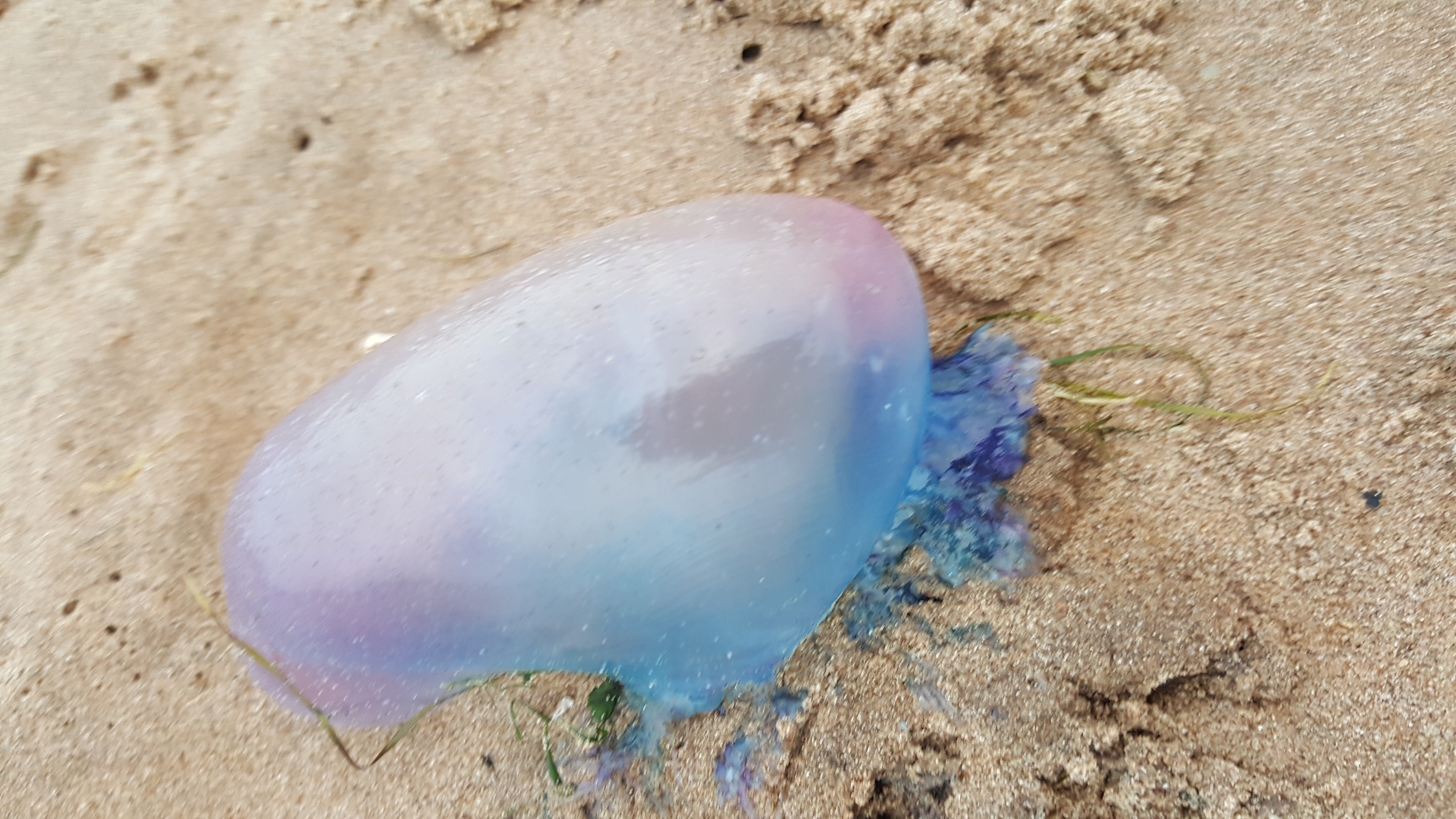
© James Marshall